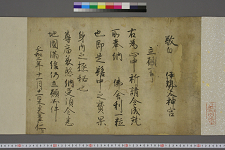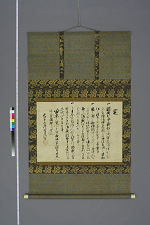The history of research on Japanese history at Waseda University is also a history of paleography and philology in Japan. The role played by Waseda pioneers in firmly establishing these research methods that we now take for granted was enormous. Before the Second World War, scholars such as
Kume Kunitake (1839-1931) and
Tsuda Sōkichi (1873-1961) refused to bow to criticism and continued unflinchingly to make public their research findings. Others such as
Nishioka Toranosuke (1895-1970),
Hora Tomio (1906-2000),
Takeuchi Rizō (1907-97), and
Ogino Minahiko (1904-92) collected historical materials, made great efforts to assemble them in coherent collections, and energetically supervised the research of their successors. Scholars who had the good fortune to be taught by these pioneers are today leaders in the field of historical research. In the field of paleography especially, Ogino concentrated on collecting primary sources and generously left many of them, including three Important Cultural Properties, to the Waseda Library.
Tanaka Mitsuaki (1843-1939), who experienced the upheavals of the mid-nineteenth century and became an important figure in the Meiji government, was a friend of the first Director of the Waseda University Library
Ichishima Kenkichi (styled Shunjō; 1860-1944), and through this connection valuable materials such the Meiji Revolution Loyalists Collection and the Tōdaiji Yakushi'in Documents (an Important Cultural Property) became part of the Library's holdings.




